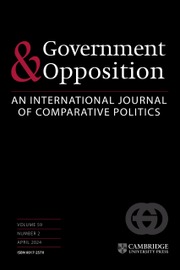Why Humans Fight
The Social Dynamics of Close-Range Violence
- Author: Siniša Malešević, University College Dublin
- Date Published: October 2022
- availability: Available
- format: Paperback
- isbn: 9781009162814
Paperback
Other available formats:
Hardback, eBook
Looking for an inspection copy?
This title is not currently available on inspection
-
Malešević offers a novel sociological answer to the age-old question: 'Why do humans fight?'. Instead of focusing on the motivations of solitary individuals, he emphasises the centrality of the social and historical contexts that make fighting possible. He argues that fighting is not an individual attribute, but a social phenomenon shaped by one's relationships with other people. Drawing on recent scholarship across a variety of academic disciplines as well as his own interviews with the former combatants, Malešević shows that one's willingness to fight is a contextual phenomenon shaped by specific ideological and organisational logic. This book explores the role biology, psychology, economics, ideology, and coercion play in one's experience of fighting, emphasising the cultural and historical variability of combativeness. By drawing from numerous historical and contemporary examples from all over the world, Malešević demonstrates how social pugnacity is a relational and contextual phenomenon that possesses autonomous features.
Read more- Offers a new sociological approach aimed at explaining the human motivation for fighting in different social contexts.
- Draws comprehensively on the latest research across variety of academic disciplines
- Includes an analysis based on the author's own interviews with the former combatants
Awards
- 2023 Outstanding Book Award Section on Peace, War and Social Conflict, American Sociological Association
Reviews & endorsements
'Sinisa Malesevic now commands the field dealing with nationalism, war and violence, gaining prize after prize as a result. This is his best book, full of new material, handled with enormous style, knowledge and subtlety. This book will last.' John Hall, McGill University
See more reviews'Malesevic begins with a penetrating critique of genetic, biological, and psychological explanations for why humans fight, whether they be mere brawlers or trained soldiers. He then proceeds to a more sociological approach, while stressing the variability of fighting experiences. His arguments are supported by immense learning and a flow of acute insights into human violence. This is a must read for anyone interested in violence and war.' Michael Mann, University of California, Los Angeles
'Like Goya's war paintings, Why Human Fight surveys its horrible subject matter with an unblinking gaze. One of the many achievements of this extraordinary survey is to zoom in closely upon the often-overlooked micro-solidarities that enable social pugnacity to develop. Here Malesevic's own interrogation of diverse literatures is relentless; his curiosity boundless; and his insights often startlingly original. A dark, and exhilarating, survey: and, in the troubled 21st century, an urgently needed book.' Tim Wilson, University of St Andrews
'This exceptionally wide-ranging study lives up to its multidisciplinary ambitions by offering both in-depth research on particular instances of violence, and panoptic breadth in terms of its comprehension and digestion of an ever-widening research field. Malesevic manages to bring together and offset different strands of scholarship and formulate a clear new perspective that will offer food for thought for a good while.' Ugur Ungor, University of Amsterdam
'Sinisa Malešević has delivered a sweeping social history of face-to-face violence. In this masterful book, Malešević shows how violence is an inherently social, relational phenomenon, and he identifies the social structures that lay the foundation for organized killing. This book is ambitious, rigorous, and deeply convincing.' Erica Chenoweth, Harvard University
'This is a remarkable book that is accessible to a broad audience and simultaneously insightful for experienced readers, making it definitely worth reading.' Egor Bronnikov, Journal of Peace Research
Customer reviews
Not yet reviewed
Be the first to review
Review was not posted due to profanity
×Product details
- Date Published: October 2022
- format: Paperback
- isbn: 9781009162814
- length: 320 pages
- dimensions: 228 x 152 x 20 mm
- weight: 0.56kg
- availability: Available
Table of Contents
Acknowledgements
Introduction: The social anatomy of fighting
1. The body and the mind: Biology and the close-range violence
2. Profiting from fighting: The economics of micro-level violence
3. Clashing beliefs: The ideological fighters
4. Enforcing fighting: Coercing humans into violence
5. Fighting for others: The networks of micro-bonds
6. Avoiding violence: The structural context of non-fighting
7. Social pugnacity in the combat zone
8. Organisational power and social cohesion on the battlefield
9. Emotions and the close-range fighting
10. Killing in war: The emotional dynamics of pugnacity
11. The future of close-range violence
Conclusion.
Sorry, this resource is locked
Please register or sign in to request access. If you are having problems accessing these resources please email [email protected]
Register Sign in» Proceed
You are now leaving the Cambridge University Press website. Your eBook purchase and download will be completed by our partner www.ebooks.com. Please see the permission section of the www.ebooks.com catalogue page for details of the print & copy limits on our eBooks.
Continue ×Are you sure you want to delete your account?
This cannot be undone.
Thank you for your feedback which will help us improve our service.
If you requested a response, we will make sure to get back to you shortly.
×





